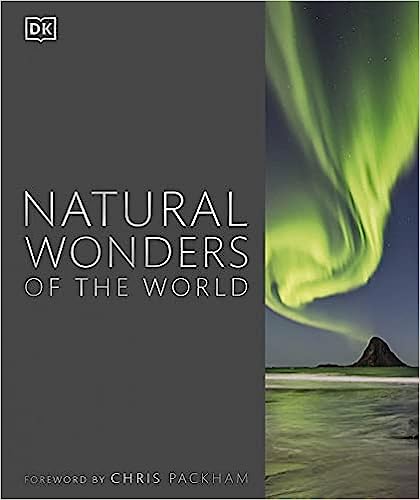Blog Books
Book: Natural Wonders of the World
I generally enjoy ‘Wonders of the World’-kind of coffee table books, especially when a lot of thought has gone into the selection of the cultural or natural sights presented. I recently bought a somewhat older one, published in 2017: Natural Wonders of the World. It was published by DK, also known for its glossy travel guides. Does it bring any value to WH enthusiasts?
What is it about
The hardcover edition of over 400 pages is too heavy to hold in your hands, so it is a ‘table book’ indeed. Ordered by continent, it shows and explains subjects such as geology, rivers and lakes, deserts, etc. The book starts with how the Earth was formed, and then for each continent, it details how that continent was shaped. There are deep dives into specific topics such as plate tectonics and karst landscapes as well. It ends with an extensive glossary of all the terms that will help you to understand an IUCN evaluation better.
The book is meant for browsing instead of reading from A-Z: it reminded me of what an Encylopedia looked like before the emergence of Wikipedia.

‘Missing’ WHS material
Although places that are already on the WH List or on one of the Tentative Lists are dominant among the examples, I noted down a few additional ones:
- San Andreas Fault (USA): one of the best examples of a transform boundary fault in plate tectonics, with one plate moving over another.
- Cave of Crystals (Mexico): caves that contain some of the largest natural crystals ever found.
- Bryce Canyon (USA): an eroded landscape of scenic beauty that developed in an ancient lake.
- El Tatio Geyser Fields (Chile): largest geyser field in the Southern Hemisphere.
- Quelccaya Icecap (Peru): the second-largest glaciated area in the tropics.
- General Carrera Lake (Argentina, Chile): a deep lake with unusual marble geological formations.
- Biebrza Marshes (Poland): wetland that is one of the largest wildlife refuges in Europe.
- Deccan Traps (India): one of the largest shield volcanoes.
- Hyden Rock (Australia): one of the oldest rock formations in Australia, picturesquely shaped like a tall breaking ocean wave.
The book also has a chapter on Extreme Weather – an interesting addition as well I think, but it would be hard to pin down these events to specific places.
Pros and cons of the book
The photography is excellent, and the text goes beyond the clichés as well. I especially enjoyed the ‘deep dives’, where for example the internal structure of the earth and "what’s inside Belize’s Great Blue Hole" are explained by illustrations and explanations of the applicable terms.
The biggest con I see is that, although the book was originally published in the UK, it focuses too much on examples from the USA – the North American continent is allowed by far the most pages and even then Mexico and Canada are hardly mentioned. Overall, it just has a tad too much on the well-known examples where great photos were available – the eroded landscape of the Ennedi is missing for example and the much smaller Meteor Crater is chosen over Vredefort Dome. Also, little or no space is given to fossil forming, while glaciers take up many pages.
Overall I'd conclude that it is a pretty book to receive or give as a present.
Els - 30 July 2023
Comments
Kyle Magnuson 31 July 2023
The best location (in my opinion) to see the San Andreas Fault is Carrizo Plain National Monument.